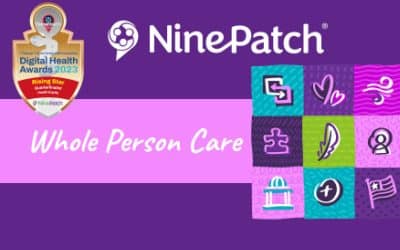What are the Benefits of Interoperability in Healthcare?
Home » Blog » Interoperability »

What are the benefits of interoperability in healthcare? Data sharing prioritizes patient care when software programs integrate across healthcare and community-based organizations.
If you work in a large hospital system, at a government or payer organization, you probably know the word interoperability and what it means. For community-based personnel—like the staff at a food bank or a homeless shelter—deep conversations about the benefits of interoperability in healthcare may have you scratching your head.
Defining the benefits of interoperability in healthcare is a deep subject that ranges from highly technical conversations to easy-to-understand examples. So, whether you visit a doctor, work at public housing agency, or fill the role of a software architect, health and social data exchange touches your life in one way or another.
Interoperability Benefits Emergent Situations
Data interoperability significantly impacts individuals and communities when weather-related, public health, or emergencies arise. For example, earthquakes, tornadoes, wildfires, flash floods, or hurricanes—forecast or unexpected—create havoc for residents in local communities.
When these events occur, emergency responders, law enforcement, fire and rescue, the National Guard, and other agencies rush to assist residents who may vacate their homes due to severe damage or safety concerns. Unfortunately, time pressures mean individuals with health concerns leave behind prescription bottles, inhalers, blood sugar monitors, and other essential items.
Injured persons may need medical attention. The elderly may rely on the use of oxygen or have mobility issues that require the use of a walker or wheelchair. Individuals who are residents in nursing homes may need to relocate due to power outages.
In time-sensitive situations, transfer of or access to accurate health and community information can be challenging. Data interoperability ensures that hospital emergency rooms, medical clinics, EMS (emergency medical service) providers, and community agencies can access electronic records (EHRs), health information exchanges (HIEs), and other essential community resources.
A doctor in a hospital emergency room can access health insurance records, medication lists, and H&P (history and physical) data to provide time-sensitive care. After providing emergency care, this software sends ADT (admit, transfer, discharge) alerts to update primary and other medical providers.
Clinical and social needs providers can exchange electronic referrals. Interoperability makes it easy for clinical providers to refer patients to community programs and social service agencies providing clothing, temporary housing, transportation, food, and other beneficial services.
As you can see, interoperability in healthcare supports partnerships between clinical care and community providers that benefit individuals and communities in a variety of day-to-day life or emergent situations.
But, as always, there is another side to interoperability.
Administrative Burden Can Negatively Impact Value-Based Care
Doctors, nurses, and healthcare navigators have different views about the benefits of interoperability in healthcare. While improving patient care is a goal, working with disparate computer programs requiring multiple screens and clicking in and out of programs can feel like a burdensome time suck.
Physicians and others feel that they already spend too much of the day looking at computer screens instead of helping patients. So how can interoperability fast-track high-value referrals and increase efficiency and effectiveness when effort must correspond with results?
Why High-Value Referrals Matter
Creating easy-to-use processes that transmit relevant data for high-value referrals allows primary care physicians, specialists, and others to access accurate, up-to-date data at the right time. In addition, combining clinical healthcare data with social determinants of health factors can identify gaps that impact patient care.
Data sharing with a 360-degree view of patient needs that delivers improved outcomes without adding administrative work is part of the Whole Person Care One View approach to healthcare.
Patient education and doctor-patient trust are critical components of high-value referrals. Busy physicians initiate referrals but may be unaware of the detailed steps required on the back end to ensure that insurance pre-authorizations are in place, patients follow through, and show up for appointments.
Value-Based Care Requires Patient Engagement
For example, referrals to specialists fail when patients don’t understand the importance of seeing another doctor. In addition, adding one more doctor appointment can feel burdensome for patients when taking time off work is necessary to attend doctor appointments or transportation issues exist.
Many doctors prescribe medications that patients can’t financially afford. Most of the time, the primary care office never knows that a patient did not complete a specialty visit or fill a prescription—especially if the patient rarely sees the doctor.
Systems of care fail when referrals result in a dead-end because provider-patient discussions about medical care don’t happen. Patients may be embarrassed to tell doctors they have to choose between paying for the electricity or scheduling an appointment.
What happens, then? Health conditions advance, risk adjustment factors rise, and costs for beneficiaries in ACOS (Accountable Care Organizations) and MA (Medicare Advantage Plans) escalate. Closing the loop on high-value clinical referrals can be accomplished with collaboration across health and social care organizations.
Linking payers with providers, engaging patients, and identifying clinical and social gaps support a successful data-driven approach to reducing costs. Involving community partners and gaining commitments to coordinate care has benefits beyond the obvious.
Community Care Partnerships Support Clinical Outcomes
When patients see multiple clinicians, ensuring continuity of care to confirm the provider in charge of specific aspects of a patient’s care, like blood tests and prescribing certain medications, is critical.
Beyond outpatient care, individuals may be hospitalized, discharged with home health visits, or may meet with community care organizations. In addition, community health workers visiting patient homes can serve as eyes and ears for physicians when referrals transmit across health systems.
Similar to the importance of doctor-patient trust, clinicians must feel comfortable referring to community organizations. Home health and social workers are valuable reporters. Home visits can confirm whether patients take medications, use medical equipment, have food in the refrigerator, and if transportation is available for future doctor appointments.
Interoperability simplifies communication between clinical and social patient interdisciplinary care teams. Care coordination and closing the loop on referrals results in better outcomes. Ongoing patient engagement completed appointments, and successful treatments mean that efforts equal results.
One View – Many Referrals
While reviewing referral information can be time-consuming, it can also be time-saving. Declining inappropriate or mismatched referrals spares patients—especially those who live in rural areas—hours of time off work or drive time. In addition, receiving high-value referrals means that specialists meet and treat patients whose needs fit their specialty.
Reciprocity in Collaboration and Data Sharing
Supporting interoperability that allows all organizations to share data regardless of technical capabilities or experience is critical. Like each patient with different diagnoses requiring a dedicated care plan, partnering organizations across health and social care have similar needs.
When organizations agree to integrate with HIEs, electronic medical records, care coordination, SDOH, resource networks, and similar systems, the time suck to enter and review data can be manageable. Requiring providers to use mandated software programs while excluding others eliminates the flexibility needed by partner organizations with disparate capabilities.
The benefits of interoperability in healthcare are far-reaching. Placing patients first happens when health and social organizations join together to understand how every day health is impacted by social determinants of health factors.
To learn more about NinePatch software solutions that support interoperability across organizations and software platforms, schedule a demo today.
© 2023 NinePatch, Inc. All Rights Reserved.
Stay Up To Date
NinePatch® Recognized as Quarterfinalist for the Digital Health Hub Foundation: Digital Health Awards
NinePatch is a Rising Star in the Health Equity Track KNOXVILLE,...
SDOH and Care Coordination Programs and Funding
SDOH care coordination and funding is available from federal, state,...
Whole Person Healthcare Model Insights and Opportunities
A whole person healthcare model combines physical, behavioral, and...




